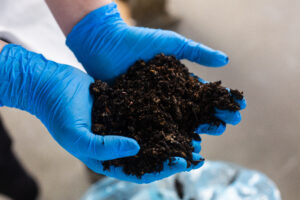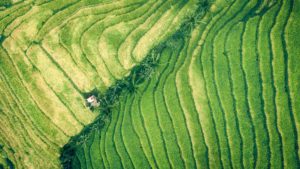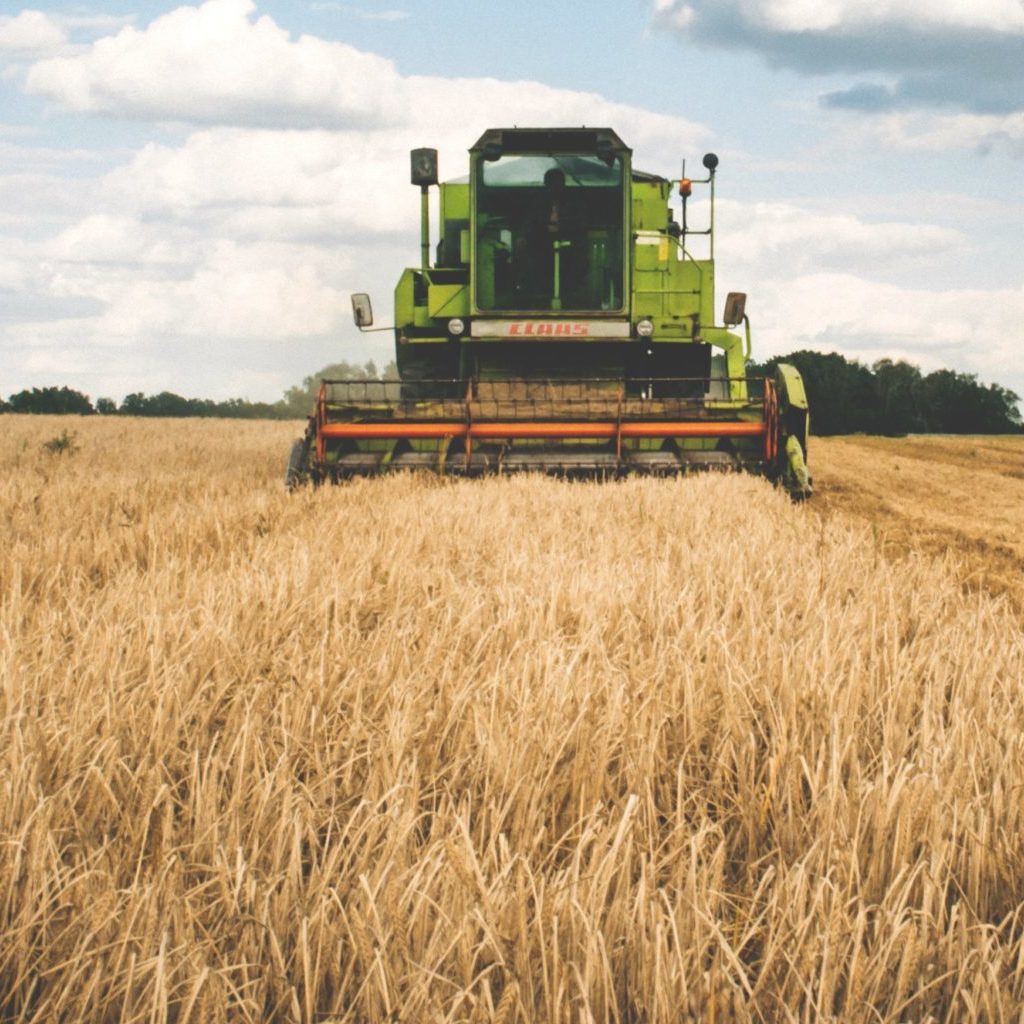Technological Innovation in Aquaculture
We need more seafood to meet demand for protein. It took over a generation to industrialize livestock processes, and the environmental and social consequences of that development are being brought into sharp focus. The aquaculture industry is much further back on that curve, with environmental concerns beginning to come to light. Whether it is ecologically damaging aquaculture practices in Southeast Asia or the environmental consequences of large fish escapes or managing problems like sea lice, many factors are driving innovation in the way we farm fish.
Currently there are five main environmental challenges for aquaculture occurring in nearshore farms and pens:
- Pollution – Fish farms release a lot of waste in the form of uneaten food (around 5% of total food in net-based fish farms), chemical treatments, and fish excrement, all of which can have significant impact on the surrounding ecosystem.
- Escaped fish – The risk of non-native fish entering a local gene pool has led to significant regulations and fines, as can be seen in Washington state (as outlined in an earlier blog) and as is occurring in Chile right now.
- Disease, parasites, and chemicals – Ocean fish farms can amplify and spread deadly disease and parasites into natural environments, sometimes leading to mass fish farm harvest destruction and a fear of disease entering wild populations. In recent years, controlling parasitic sea lice spread from farmed salmon to wild salmon has cost the industry $5 billion.
- Access to feed – Roughly 30% of all captured fish are reduced into fish meal and fish oil. Much of this (68% of meal and 88% of oil) is used in aquaculture. Up to 2kg of wild caught fish is used to produce 1kg of farm-raised fish.
- Predator impacts – If you fill a cage full of fish, its is going to attract bigger fish and other animals. There are often reports of sea lion deaths in Canadian fish farm cages, alongside the farmers’ own efforts to curtail predation of their stock.
Balancing these factors with the economic drivers for locating a fish farm is driving innovation across onshore and off-shore technologies. Onshore technologies have the advantage of an entirely closed system, negating environmental concerns. Alternatively, placing a large cage further out to sea has less immediate environmental impact on coastal ecosystems with a much cleaner and temperature-stable environment. Both have challenges and are developing to meet the growing needs of a hungry planet.
Fish Farming at Sea

Farms for raising fish are getting larger, more secure, and are being sited further offshore. Norwegian salmon farming operator SalMar is also developing a deep-ocean cage system that hopes to accommodate 1.5 million salmon in each of six nets that it has acquired from China Shipbuilding Industry Corp. for $300 million. The huge cage, named Ocean Farm 1, is mid-way through its year-long trial period, and is reporting good growth rates and low mortality. Moreover, as salmon farms move deeper into the high seas, the level of sophistication is increasing to promote autonomy using high definition cameras and submerged automatic feeders to reduce the need for human travel to and from the cages.
Shandong Wanzefeng Fishery is installing a cage at a site in the Yellow Sea off the coast of China. Called Deep Blue 1, the cage was designed by the Hubei Marine Engineering Equipment Research Institute and inspired by the SalMar-designed Ocean Farm 1, and encompasses a volume of 50,000 cubic meters that will generate a harvest of about 1,500 tonnes of salmon per season.
Norwegians are also working to improve cage design. One particular innovator, SeaFarming Systems based in Stavanger, Norway, is developing the “Aquatraz” cage. This cage is suited to sites closer to shore than the design of Deep Blue 1, but offers a high level of security and pollution control through its hard shell configuration.

Aquaculture innovation is also coming out of Hawaii, with new trials in Gulf of Mexico. Kampachi Farms, which is based in Hawaii where it farms Almaco Jack through a shore-side hatchery and open ocean fishery, has taken on the regulatory quagmire that faces fish farmers in the Gulf of Mexico to be granted permission for a trial site. The company is deploying a spheroid cage called the Aquapod developed by Innovasea, a Boston-based developer of an open-ocean fish farming platform. Innovasea is a portfolio company of Cuna del Mar, an investor in off-shore aquaculture companies, including two other companies that have also used the Aquapod. The first is Open Blue, the operator of the current largest off-shore farm 7 miles off the coast of Panama where they are raising Cobia, and Earth Ocean Farms, which is developing a site for Aquapods in the Sea of Cortez, Mexico.
Interested in more of the latest insight and innovation in agtech? Join us for Cleantech Forum San Francisco staring on 24 January 2022.
Seafood Farming on Shore

Recirculating Aquaculture Systems (RAS) are becoming more common with water recycling and waste reused as fertilizer for agriculture. RAS can reduce the carbon footprint of seafood by up to 50%, and fish in these systems can be grown in a controlled and traceable environment without the use of hormones or antibiotics. These systems can be placed almost anywhere, including near urban centers. One test facility in Denmark built in 2011 by Atlantic Sapphire is now being commercialized into the largest RAS facility in the world in Miami, Florida. Called the Miami ‘Bluehouse,’ the facility will rear Atlantic salmon in ideal conditions, according to the company.
Northeastern states are also attracting investment in both offshore aquaculture and onshore RAS. In an area dominated by Cooke Seafood, which leases 637 acres of offshore aquaculture throughout Maine, two newcomers are building onshore. Nordic Aquafarms is developing a 40-acre property outside Belfast, Maine, for which the company has nearly completed its due diligence. The plant will produce 33,000 tonnes of Atlantic salmon, a species that relies on farming, as commercial fishing is banned in the US. The first phase of the build will require $150 million and be completed some time next year, with a full build out expected to cost $450 to $500 million. Another developer working in this area is Whole Oceans, which is developing a RAS salmon farm in Bucksport, Maine that will be built in phases requiring a total of $250 million. The company is working with some leading names in RAS and aquaculture to bring its plant to life, namely The Conservation Fund, the Freshwater Institute, Billund Aquaculture, Pranger Enterprises, and Kennebec River Biosciences.

Much of the focus here has been around salmon, which makes sense as it is one of the highest value and volume species being farmed around the world. Moreover, as only 4% of the domestic demand for salmon in the US is produced domestically, it is a focus area for innovation. However, other species are finding favor with onshore RAS developers. Australis is a Massachusetts-based farmer of barramundi, which was a relatively little known fish until the company began farming it at its RAS facility in Turner’s Falls to create demand for the “sustainable sea bass.” Having built demand for the fish, production was expanded to open ocean pens in Vietnam to produce the fish in volume sufficient for distribution through stores like Whole Foods, Costco, BJ’s and Stop&Shop.
One further technological innovation that complements onshore fishing systems well is the onset of genetically modified salmon. The leader in this field, Aquabounty Technologies, is already selling its products in Canada and is working on permissions for a plant based in the US. With genetic engineering involved (which reduces fish maturity time by 50%), the use of RAS keeps the modified salmon away from the native population’s gene pool.
Farm Management Systems
Innovation around farming infrastructure is critical, and as in other industries, sensors and related data-derived services are targeting farm efficiency. Singapore-based Umitron recently raised a $8.2 million seed round from Innovation Network Corporation of Japan, IDEO, and D4V to build out an aquaculture management system called UmiGarden, which gives greater insight into school behavior analysis through sensors and a management software layer. Similarly, Aquabyte is building a machine vision hardware and data analysis software tool, introducing a subscription-based model that moves the industry away from sensor systems that charge cost-plus to a more Bay Area-familiar model of software-as-a-service.
Feed
 Feed is the major operating cost for fish farmers, varying from around 50% to as high as 90% in certain markets and depending on species. Aquaculture feed is a mix of various oils, fats, vitamins, proteins, carbohydrates and more – again varying by species.
Feed is the major operating cost for fish farmers, varying from around 50% to as high as 90% in certain markets and depending on species. Aquaculture feed is a mix of various oils, fats, vitamins, proteins, carbohydrates and more – again varying by species.
Traditionally, protein sources for aquaculture feed have been captured fish (which also brings fish oil, fish meal, and other nutrients into the recipe) and soybean or similar protein-rich agricultural crop. This leads to one of the challenges where up to 5lbs of wild fish is used to produce 1lb of farmed fish. Alternative, and more sustainable, sources of protein are therefore being sought to meet growing demand for protein from more sustainable sources.
Here are a few examples of innovations in this area:

Other Innovation Areas
The solutions above cover some of the innovation in aquaculture. Additional areas include automation, fish processing, species selection and increased variety, as well as seafood product preparation, packaging, and shipping.
I am currently looking deeper into a number of these aspects through a thorough value chain analysis, and would love to hear your thoughts – reach out to me at chris.sworder@cleantech.com


